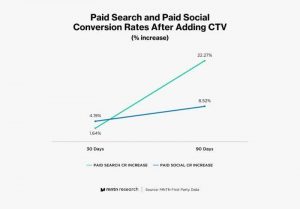 Everybody knows there are costs associated with any job, whether it’s the amount of money spent on lunch or the expense of transportation just to get there. But what many don’t realize is those small outlays add up, costing workers thousands of dollars a year.
Everybody knows there are costs associated with any job, whether it’s the amount of money spent on lunch or the expense of transportation just to get there. But what many don’t realize is those small outlays add up, costing workers thousands of dollars a year.
Consider this: according to a new survey by Accounting Principals, the finance and accounting staffing firm, on average, Americans spend nearly $ 70 on gas, $ 30 on lunch and $ 10 on coffee a week. That amounts to around $ 5,500 a year. And that doesn’t take into account work clothes, professional dues, and memberships, relicensing and recertification. Not to mention day care and parking.
Another expense that many people don’t even realize is work-related: de-stressing activities. Accounting Principals found 85% of survey respondents spend money to de-stress with 49% spending it on dining, 24% on happy hour and 22% on trips or vacations. Only 19% spent money on clothes or shoes to de-stress while 13% preferred spending on electronics and 2% on jewelry.
While work-related expenses aren’t completely avoidable, there are ways to get a break on some of them. From taking advantage of employer benefits to making a case for new ones, here are five ways to reduce the financial costs of having a job.
1. Working at home can be cost free
One of the perks of working from home is that you don’t have to spend a ton on a wardrobe or commuting every day. In fact, according to FlexJobs, by telecommuting full-time workers can save anywhere from $ 4,000 to $ 9,000 a year. Thankfully in this technology driven era, many companies are willing to allow employees to work from home part of the time or all of the time. If your company doesn’t have a policy on the books, it doesn’t hurt to ask. Remember to have a case as to why you can handle the job remotely.
2. Brown bag it to save
If you are one of the millions that have to go to an office each day, there are also ways to save. One of the easiest is to forgo the lunch out and brown bag it some or all of the week. According to the Accounting Principals survey, which polled people about the cost of working, men spend more on lunch than their female counterparts and are more likely to drop $ 21 to $ 40 on a meal versus women. Bringing lunch from home is going to be an easy way to cut costs.
Technical workers, particularly the ones in demand, have it better than their peers. That’s because many tech companies are willing to throw free meals and other perks their way to recruit and retain them.
3. Commute at off-peak hours
Thank technology or the millennials, but companies are more willing than ever to allow employees to work flexible hours. Sure, there are jobs that require employees to clock in at a set time, but for the vast majority, working hours outside of the 9 to 5 confines is accepted. Flex time can not only improve your quality of life, but also your bank account since commuting at off times will be cheaper. “A flexible schedule may be able to help you avoid the biggest commuting hours to shorten your commute, which will decrease your gas and car maintenance costs,” says Brie Reynolds, director of online content at FlexJobs.
4. Take advantage of your company’s benefits
You may not get a free ride to work every day or a refund on your work wardrobe, but many employers are willing to help out with some of the costs whether its travel, professional development, and memberships. Many companies, for example, offer programs that let employees pay for their commute with pre-tax dollars, reducing the amount they spend on commuting expenses. Aren’t sure what your company offers? A quick check with HR is all that’s usually needed.
5. Negotiate it into your compensation package
Possess certain sought-after skills and chances are you’ll have employees banging down your door to hire you. In an employee driven market, the job seeker holds the cards and as a result can negotiate perks that many not be part of the original package. Terry Pile, principal consultant at Career Advisors, says she once had one client who got the company to cover dry cleaning costs because the position required him to wear suits every day. Whether it’s working at home, having a flexible schedule or getting some of the cost to commute covered, the only way you are going to get those perks is to speak up. While going to work every day is never going to be cost free by being proactive, it can be a lot cheaper.
Business & Finance Articles on Business 2 Community(79)
Report Post




